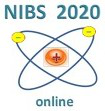Speaker
Description
Radiation temperature measurement is acquired widely to be based on the famous Planck's law of blackbody radiation, which indicate that any object with a temperature higher than absolute zero is constantly radiating infrared rays outward. According to the law, the radiation emission at a given temperature is constant in object and varies among materials which ruled by its emission rate.
Just as other emission model, the received energy of a given radiation source is dominated by its spatial placement and the emission rule of the give source. So, my work here is to verify the radiation rule of the blackbody and the spatially variation rule of the received emission.
For a typical monochromatic radiation temperature measurement, the measured voltage of the transferred emission follows this equation:
$V_{num} = \rho M \cdot \frac{\Delta A_B}{\pi l^2_B} \times D_{decay} \times S_{sensor} \times T_{trans} \times A_{amp}$
Among them, $\rho$ represent the emission rate of the source, $\Delta A_B$ is light collection area and $l_B$ shows its distance, $D_{decay}$ give a sum to the optical attenuation, $T_{trans}$ gives us the conversion factor from radiation to electric signal, $A_{amp}$ is the amplifier magnification, M is the blackbody spectral radiance, which follows Planck blackbody radiation formula:
$M=\int_{\lambda_{1}}^{\lambda_{2} } \cdot \frac{2 \pi h c^{2}}{\lambda^{5}} \cdot \frac{d \lambda}{e^{h c / k_{B} \lambda T}-1}$
Among them, is Planck's constant equals 6.626e-34 J · s, c is the speed of light equals 2.997925e8 m / s, T is the temperature of the source, is spectral wavelength, and is Boltzmann's constant equals 1.38054e-23 J / K.
To verify the emission rule, we keep the spatial placement fixed and change the temperature of the source to collect the data. Under such situation, the output voltage $V_{num}$ is proportional to Planck blackbody spectral radiance M. But considering the zero drift, the presented $M-V_{num}$ relationship is a linear function theoretically. So we did the verification:

Using the above $M-V_{num}$ data, we did a linear fit and get a COD of 0.99969, So $M-V_{num}$ have a typical linear relationship.
To verify the spatially variation rule, we keep the source temperature and the spatial phase fixed and change the observing distance to record the vary of the output voltage $V_{num}$. The distance should be inversely proportional to the output voltage $V_{num}$. And due to the zero drift $b_0$ and the initial distance of the blackbody source $l_0$, the actual relationship follows equation:
$V_{num}=\frac{k}{(l_B+l_0)^2}+b_0$
We used two different temperature sets, each has a zero drift of 0.5V, since $l_0$ is a constant number we use one data set to fitting the k, $l_0$ data with $b_0=0.5V$, another one using the $l_0$ data and fitting the k,$b_0$ to see whether $b_0$ fitted to 0.5V. The result shows that $b_0=0.53V$, so the fitting result meets the expected data and the spatial relationship is verified.

Those two rules are the bases for a more accurate infra-red measurement way of NBI process monitoring, as for infra-red measurement results changes with different arrangement which should be verified beforehand.

